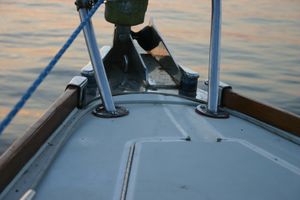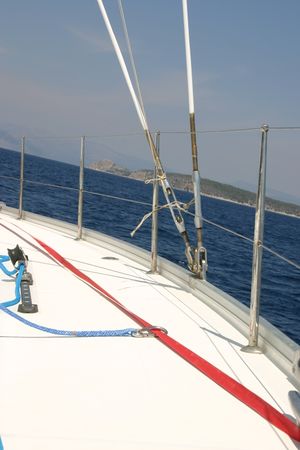Jackline
| |
This article does not cite any references or sources. Please help improve this article by adding citations to reliable sources. Unsourced material may be challenged and removed. (May 2008) |
A jackline is a rope or wire strung from a ship's bow to stern to which a safety harness can be clipped, allowing a crewmember to move about the deck safely when there is risk of falling or being swept overboard. At sea, falling overboard is one of the leading causes of death in boating; fastening oneself to the ship with a safety harness reduces this risk.
Generally the jacklines are run from the bow to the stern on both starboard and the port side of a ship. Jack lines are used in heavy weather and in periods of reduced visibility, i.e. fog or at night.
Jacklines may be rigged temporarily when bad weather is expected, or, especially on sailboats heading offshore, they may be left in place all the time and used as necessary. They are usually attached to strong padeye or cleat fittings at both ends of the boat, allowing the crewmember to move fore and aft by sliding their harness' clip along the line. Jacklines may be made of wire or low-stretch rope. More recently, sailors are using high strength nylon webbing. The reason is that flat webbing does not roll under foot while working on deck. This reduces the hazard that can be created by using rope. The image to the right shows the traditional steel wire jackline and the image below shows an example of a more modern jackline made of flat nylon webbing.
| |||||


